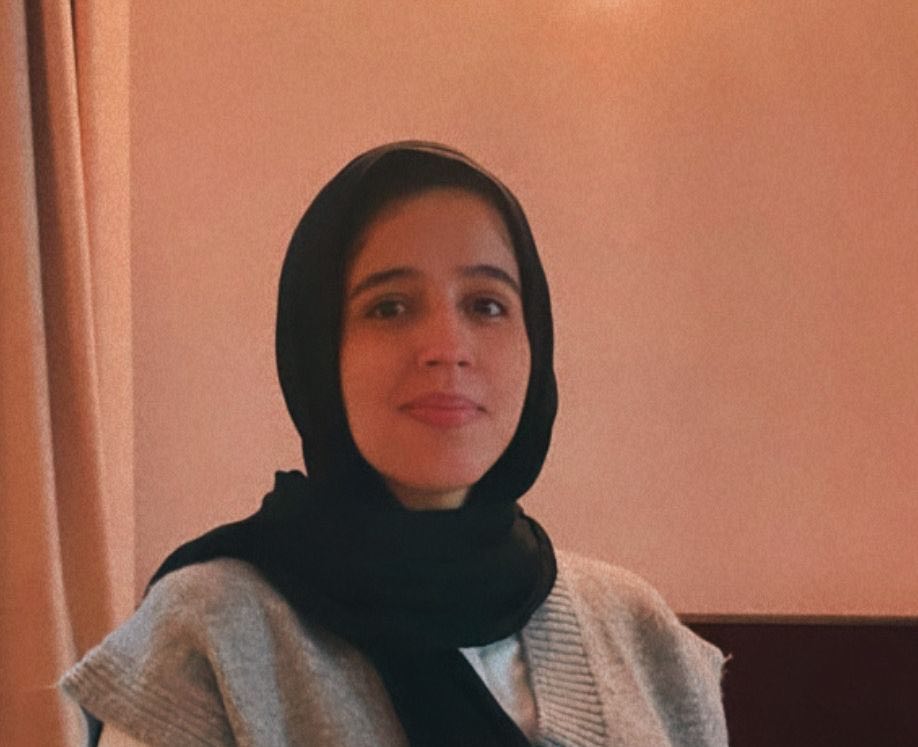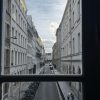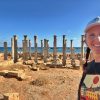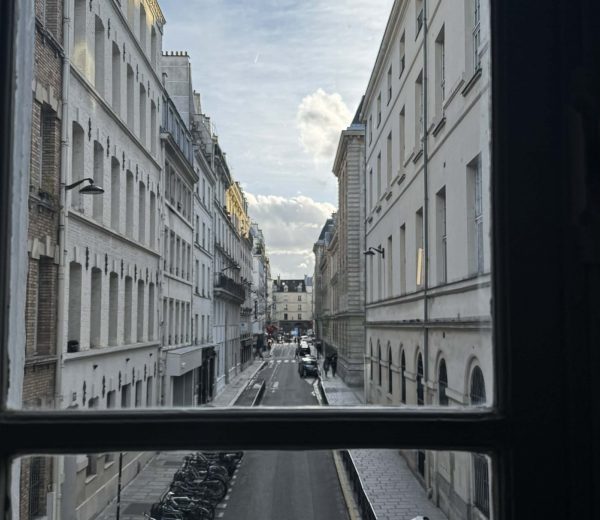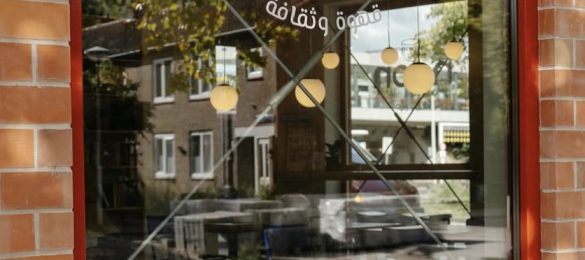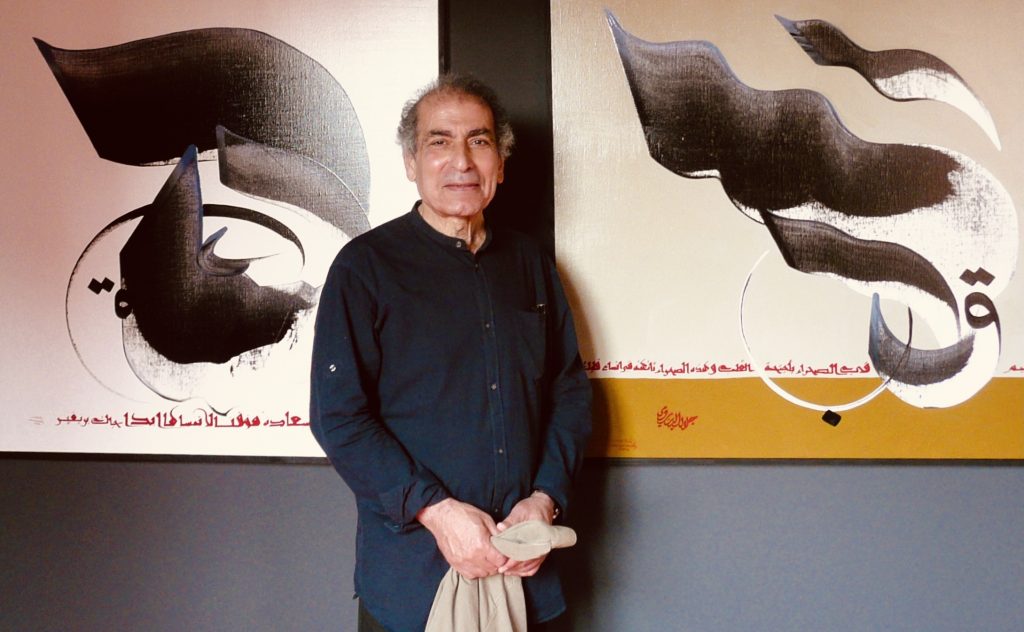
The Iraqi-French calligraphist, Hassan Massoudy, was born in 1944 in Najaf, south of Iraq. Growing up in Iraq, Mr. Massoudy had a childhood filled with art and creativity. His school played a huge role in the discovery process for Mr. Massoudy’s passion for art. By the Seine river in Paris’s 19th district; I finally got the chance to interview Mr. Massoudy to talk about his career in calligraphy.
Leaving Iraq to France in 1969 where he finally settled to continue an inspiring career in calligraphy; Hassan Massoudy’s journey was influenced by many events. Amongst many was the students’ revolution of May 1968. It was the revolution that was described to have pushed France into the modern world. During that period, he just arrived in France to study in the National School of Fine Arts in Paris. It was a transformative event for both France and the calligraphy artist Hassan Massoudy.
Memories with Art & Calligraphy
During our conversation, I asked Mr. Massoudy about his first influential memory of art and calligraphy. Mr. Massoudy expressed that two memories influenced his career and assisted him to pursue his passion. First, it was in the dream and the second was more materialistic or tangible. The former, he used to watch his intellectual uncle doing calligraphy at home in his small office.
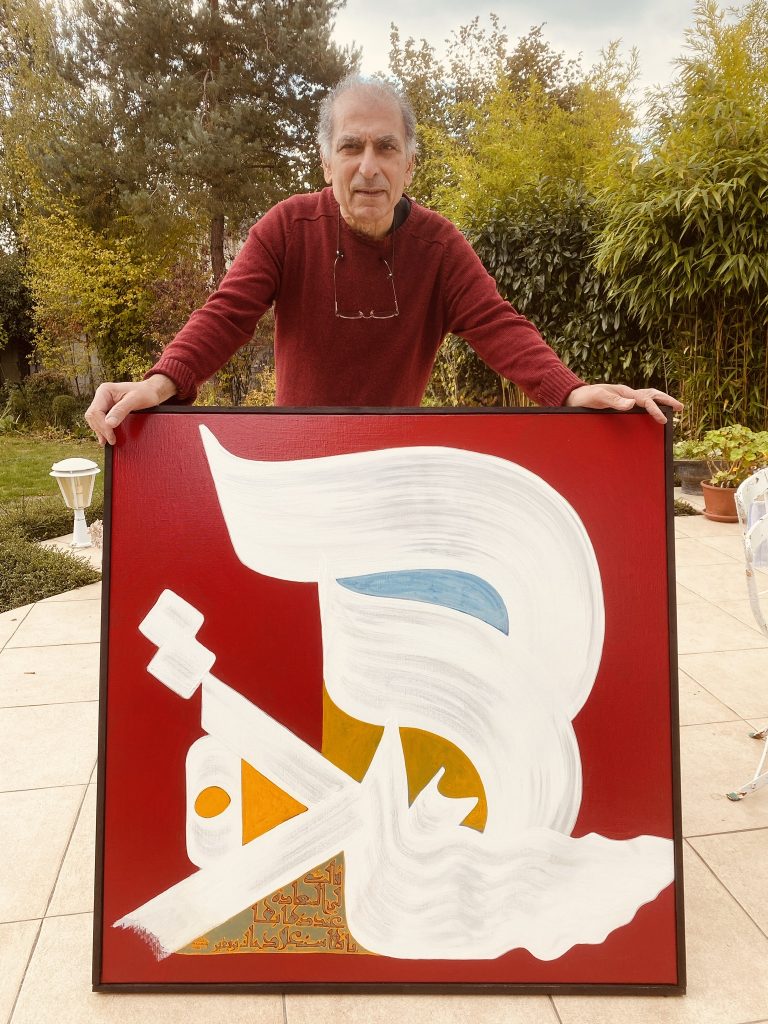
While the second was a dream. Mr. Massoudy always dreamt of having the vision of passing by a big building with huge lines drawn on its walls. He remembers his mother in Najaf, in Iraq when they both passed by a mosque in their neighborhood. Later on, he realized that maybe the lines he saw in the dream were the lines he saw on the Mosque walls which he passed by with his mother.
The Second Memory,
It was when he was in primary school at the age of 10 years old. One day, his teacher entered the class and asked for Hassan Al-Massoud. The teacher praised the writings of Mr. Massoudy. It was the first public practice for the Arabic line, khat. Which later on he did it for a living when he moved to France.
Growing up, he worked with many students in his school to participate in the end-of-school gallery and exhibition. The artistic activity was prominent in Iraq during his childhood. With their artwork, they considered it as a social contribution. The ideas and concepts taught by his teachers, Mr. Massoudy still use to this day in his work. During his childhood, he was asked by schools to write texts and to participate in a wall magazine by his English teacher called ”Duty – Al-Wajib”. His teacher’s attention to Mr. Massoudy’s writings was a confirmation of the mysterious feelings he had. It helped him to find himself and lead to calligraphy becoming an integral part of his life.
Finding Inspiration in Letters & Words
In the early stages of his career, he wanted to be an artist specializing in the European style of fine arts. He first used the calligraphy pen to draw portraits with dots. It was a long process to come up with a full portrait. This could take a month to finish. After that, he transferred to become a full-time calligraphy artist. He gave calligraphy lessons for over 30 years.
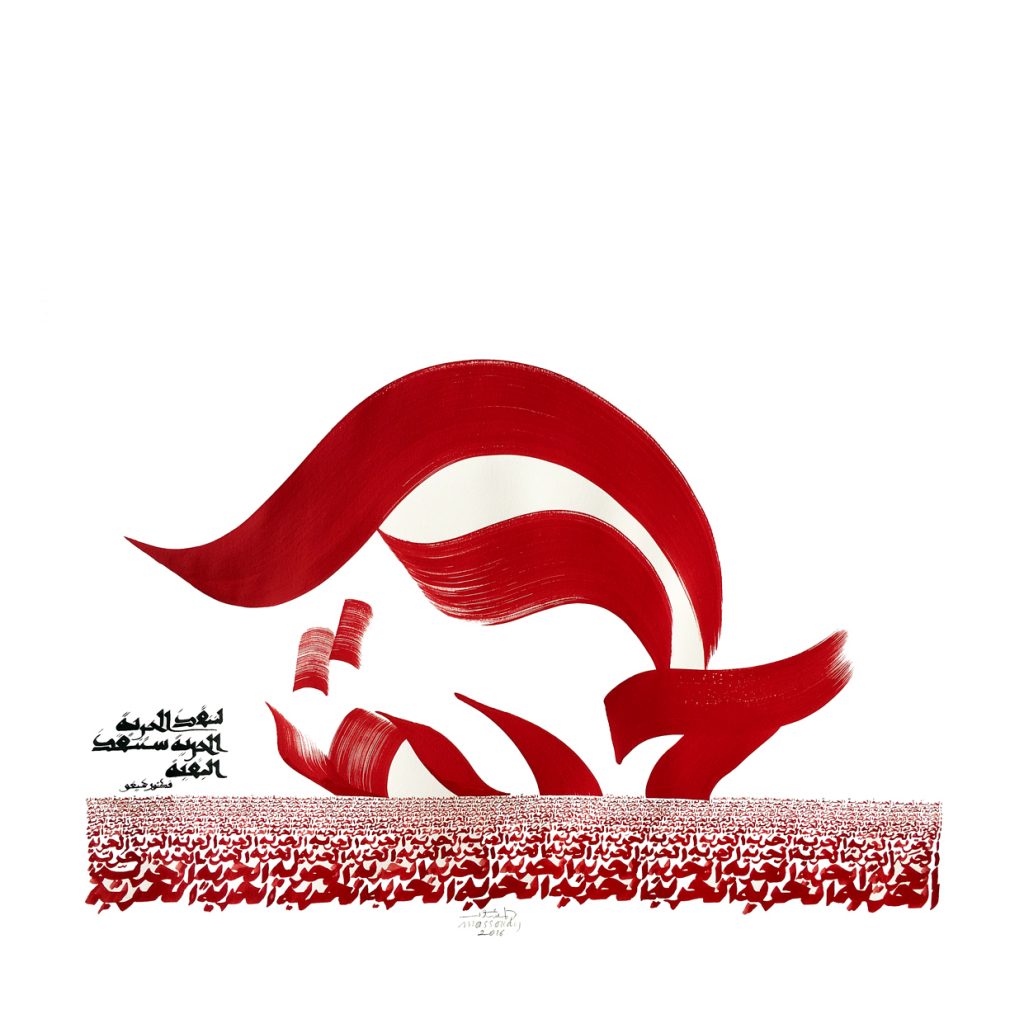
During our detailed interview, I asked Mr. Massoudy whether inspired by the letter, word, or both. Mr. Massoudy expressed that in fact, he is inspired by three things. First, by the need of both the word and letter. Through any phrase in Arabic, he looks for the part that would represent the state or the notion of the news. The lines he creates, as he expressed, are always alive. the letter, of course, is highly important with the social situation but most importantly the shape of letters is of great importance. calligraphist
Adding Speed to Calligraphy calligraphist
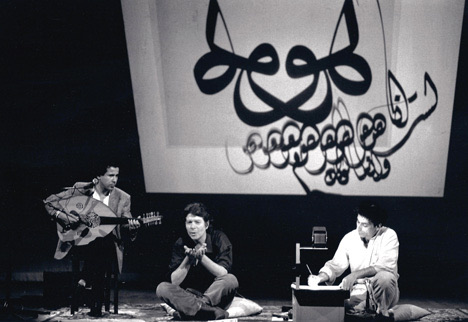
Usually, writing in calligraphy is slow by default. However, I noticed in Mr. Massoudy’s work a sense of speed. He used slow calligraphy a lot for years during his career. Explaining the slowness as the process of sending information to the mind to process the information of words’ construction. There is a need to have a long and deep interaction with the letter to incorporate it with his feelings and mind.
In 1972, he created the show “Arabesque” with the actor Guy Jacquet joined a few years later by the musician Fawzy Al Aidy. Mr. Massoudy’s interaction with this artist who loved to learn the Arabic language. He told him that Arabic is a rhythmic language that comes in contrast with the French language. During the live show they had around France and then Europe, Guy Jacquet would narrate the poems in Arabic, and Hassan Massoudy would write them in calligraphy on top of a projection machine. Of course, the students’ revolution had a huge influence in making this show a possibility. The revolution led to the public’s need for new forms of art. calligraphist
With practice, Calligraphist
Mr. Massoudy began to speed up in writing to keep up with the narration process. However, to comprehend the process of speeding within 12 years, he managed to find many solutions for fast calligraphy. Both Massoudy and Jacquet worked in harmony but they never met at any point during the live performances they had. In addition, this speed was not created with the usual calligraphy tool but he cut a piece of a carton in a special way to make fast calligraphy easier.
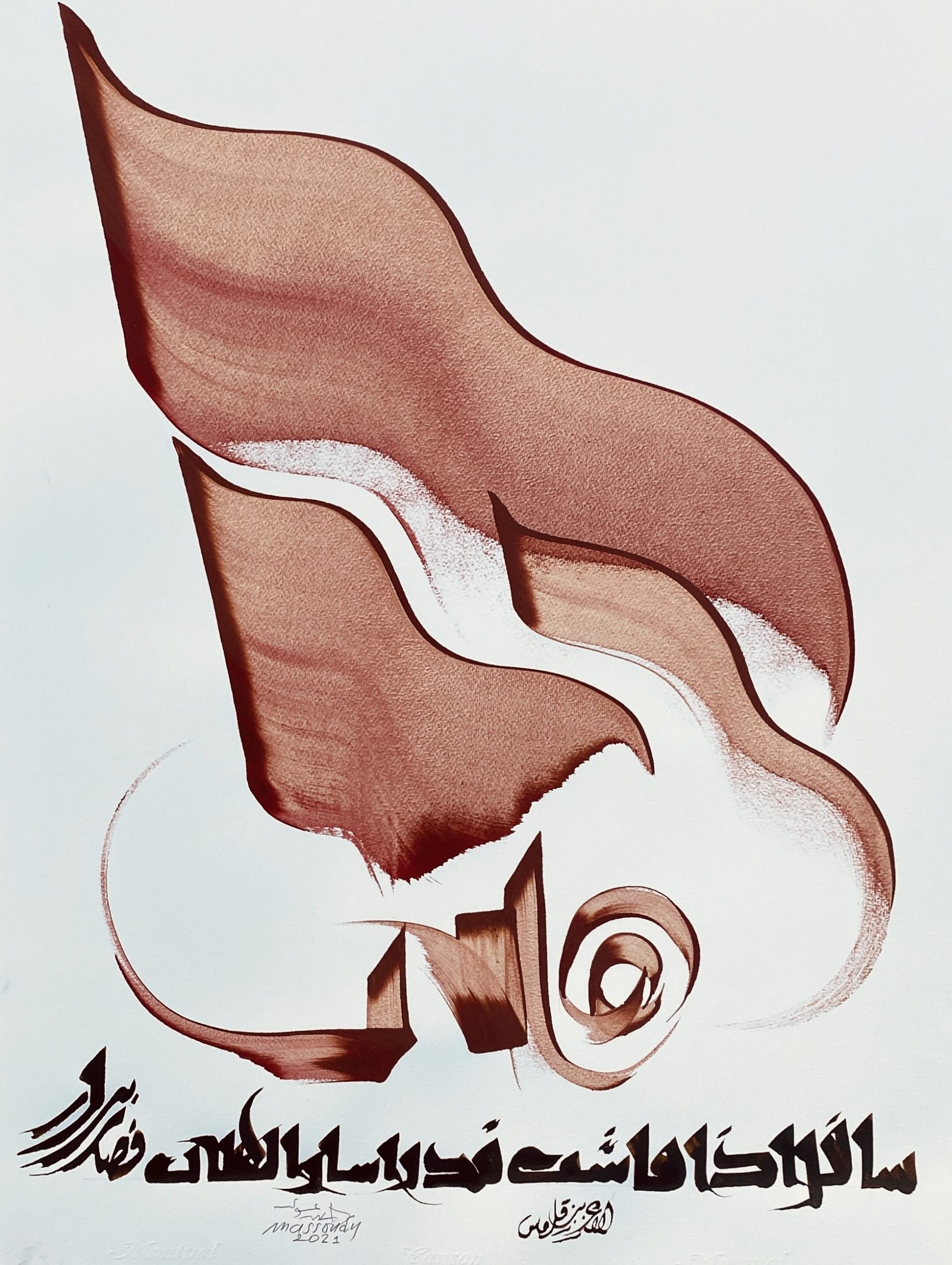
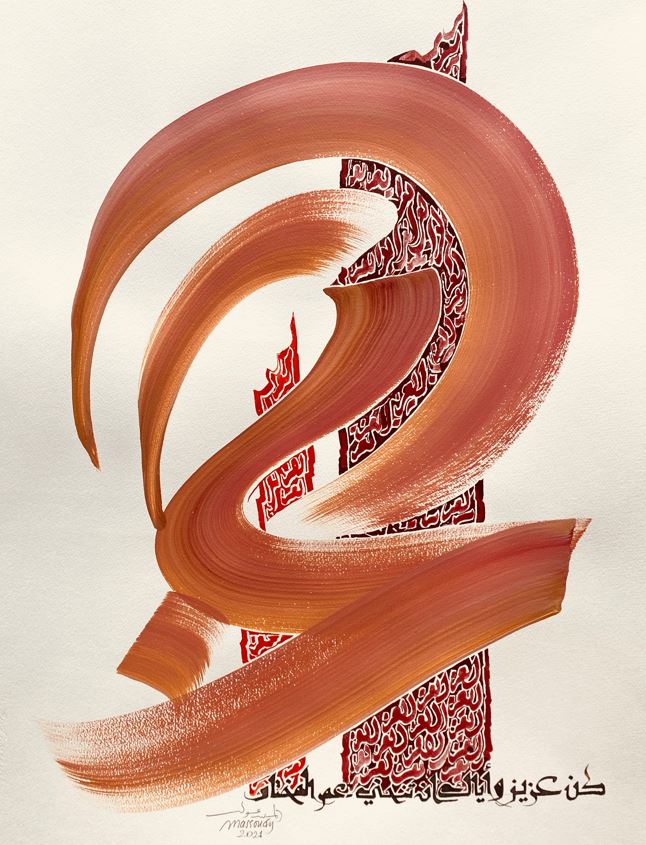
This piece of carton gave a dark ink at the beginning of the word and it slowly fades away with speed. Mr. Massoudy described it as ”light” entering the calligraphy work. During that time, it was still new to perform calligraphy in front of people. Jacquet was the one who looked for the poems to narrate. The audience first thought he was an Arabic person from how excellent his narration in Arabic was.
Moreover, Calligrahpist
Mr. Massoudy insisted on the importance and influence of the students’ revolution in France. It allowed for the integration of non-French artists in social and cultural activities. The Arabic culture abroad benefited greatly from this. French television aired Arabic programs continuously during that time. That exposed French citizens to Arabic culture as well. The cultural Minister at that time played a huge role in this integration scheme. Cultural spaces were obligated to work with Arabic artists to receive funding from the Ministry of culture.
The French Experience’s Impact on the Calligraphist Hassan Massoudy
He got the chance to have multiple interviews and exhibitions to show the audience the importance of Arabic calligraphy. Visited both Cairo and Istanbul many times and many other countries worldwide. Adding to this, he also expressed that movement in France gave him the chance to do what he likes with calligraphy. Having the opportunity to perform in front of over 1000 people. For all calligraphists, it is an individual experience but his experience to perform in front of people is another form of ‘’artistic spying’’ in public performances. Mr. Massoudy’s final remarks on the social factor’s role help to encourage artists to develop and improve. Motivation and encouragement help artists greatly in their work to continue creating inspiring work.
You can follow Hassan Massoudy’s work on his website: Hassan Massoudy Calligrapher, modern Arabic calligraphy. Also, you can follow him on both Facebook and Instagram on Hassan Massoudy | Facebook & Massoudy (@hassanmassoudy).
